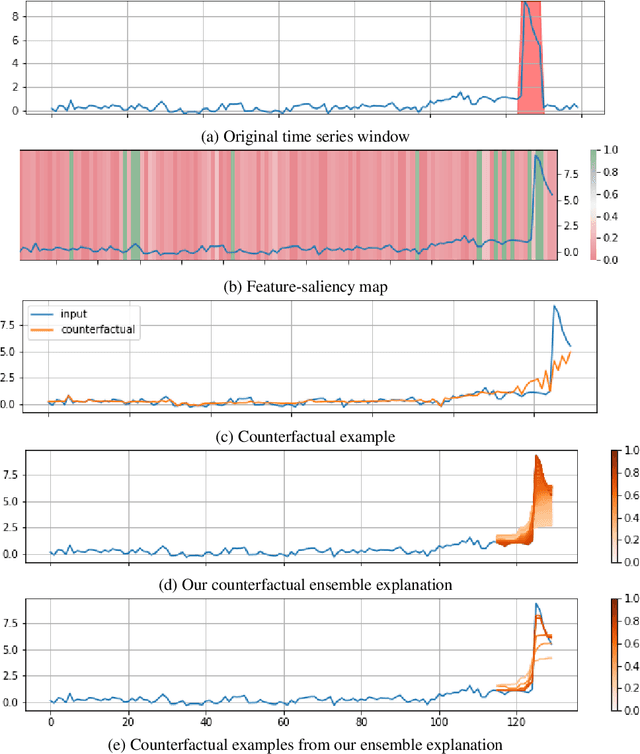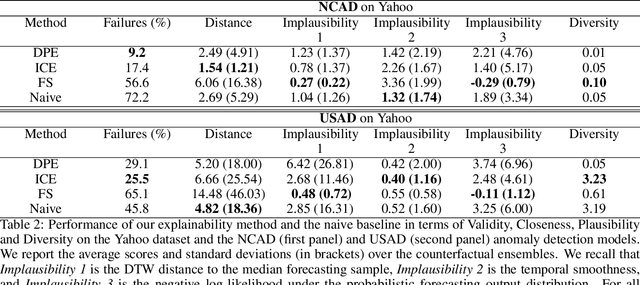Muhammad Bilal Zafar
MPI-SWS
Rote Learning Considered Useful: Generalizing over Memorized Data in LLMs
Jul 29, 2025Abstract:Rote learning is a memorization technique based on repetition. It is commonly believed to hinder generalization by encouraging verbatim memorization rather than deeper understanding. This insight holds for even learning factual knowledge that inevitably requires a certain degree of memorization. In this work, we demonstrate that LLMs can be trained to generalize from rote memorized data. We introduce a two-phase memorize-then-generalize framework, where the model first rote memorizes factual subject-object associations using a semantically meaningless token and then learns to generalize by fine-tuning on a small set of semantically meaningful prompts. Extensive experiments over 8 LLMs show that the models can reinterpret rote memorized data through the semantically meaningful prompts, as evidenced by the emergence of structured, semantically aligned latent representations between the two. This surprising finding opens the door to both effective and efficient knowledge injection and possible risks of repurposing the memorized data for malicious usage.
Position is Power: System Prompts as a Mechanism of Bias in Large Language Models (LLMs)
May 27, 2025Abstract:System prompts in Large Language Models (LLMs) are predefined directives that guide model behaviour, taking precedence over user inputs in text processing and generation. LLM deployers increasingly use them to ensure consistent responses across contexts. While model providers set a foundation of system prompts, deployers and third-party developers can append additional prompts without visibility into others' additions, while this layered implementation remains entirely hidden from end-users. As system prompts become more complex, they can directly or indirectly introduce unaccounted for side effects. This lack of transparency raises fundamental questions about how the position of information in different directives shapes model outputs. As such, this work examines how the placement of information affects model behaviour. To this end, we compare how models process demographic information in system versus user prompts across six commercially available LLMs and 50 demographic groups. Our analysis reveals significant biases, manifesting in differences in user representation and decision-making scenarios. Since these variations stem from inaccessible and opaque system-level configurations, they risk representational, allocative and potential other biases and downstream harms beyond the user's ability to detect or correct. Our findings draw attention to these critical issues, which have the potential to perpetuate harms if left unexamined. Further, we argue that system prompt analysis must be incorporated into AI auditing processes, particularly as customisable system prompts become increasingly prevalent in commercial AI deployments.
When Should We Orchestrate Multiple Agents?
Mar 17, 2025Abstract:Strategies for orchestrating the interactions between multiple agents, both human and artificial, can wildly overestimate performance and underestimate the cost of orchestration. We design a framework to orchestrate agents under realistic conditions, such as inference costs or availability constraints. We show theoretically that orchestration is only effective if there are performance or cost differentials between agents. We then empirically demonstrate how orchestration between multiple agents can be helpful for selecting agents in a simulated environment, picking a learning strategy in the infamous Rogers' Paradox from social science, and outsourcing tasks to other agents during a question-answer task in a user study.
Can LLMs Explain Themselves Counterfactually?
Feb 25, 2025Abstract:Explanations are an important tool for gaining insights into the behavior of ML models, calibrating user trust and ensuring regulatory compliance. Past few years have seen a flurry of post-hoc methods for generating model explanations, many of which involve computing model gradients or solving specially designed optimization problems. However, owing to the remarkable reasoning abilities of Large Language Model (LLMs), self-explanation, that is, prompting the model to explain its outputs has recently emerged as a new paradigm. In this work, we study a specific type of self-explanations, self-generated counterfactual explanations (SCEs). We design tests for measuring the efficacy of LLMs in generating SCEs. Analysis over various LLM families, model sizes, temperature settings, and datasets reveals that LLMs sometimes struggle to generate SCEs. Even when they do, their prediction often does not agree with their own counterfactual reasoning.
The Impact of Inference Acceleration Strategies on Bias of LLMs
Oct 29, 2024



Abstract:Last few years have seen unprecedented advances in capabilities of Large Language Models (LLMs). These advancements promise to deeply benefit a vast array of application domains. However, due to their immense size, performing inference with LLMs is both costly and slow. Consequently, a plethora of recent work has proposed strategies to enhance inference efficiency, e.g., quantization, pruning, and caching. These acceleration strategies reduce the inference cost and latency, often by several factors, while maintaining much of the predictive performance measured via common benchmarks. In this work, we explore another critical aspect of LLM performance: demographic bias in model generations due to inference acceleration optimizations. Using a wide range of metrics, we probe bias in model outputs from a number of angles. Analysis of outputs before and after inference acceleration shows significant change in bias. Worryingly, these bias effects are complex and unpredictable. A combination of an acceleration strategy and bias type may show little bias change in one model but may lead to a large effect in another. Our results highlight a need for in-depth and case-by-case evaluation of model bias after it has been modified to accelerate inference.
Evaluating Large Language Models with fmeval
Jul 15, 2024



Abstract:fmeval is an open source library to evaluate large language models (LLMs) in a range of tasks. It helps practitioners evaluate their model for task performance and along multiple responsible AI dimensions. This paper presents the library and exposes its underlying design principles: simplicity, coverage, extensibility and performance. We then present how these were implemented in the scientific and engineering choices taken when developing fmeval. A case study demonstrates a typical use case for the library: picking a suitable model for a question answering task. We close by discussing limitations and further work in the development of the library. fmeval can be found at https://github.com/aws/fmeval.
On Early Detection of Hallucinations in Factual Question Answering
Dec 27, 2023



Abstract:While large language models (LLMs) have taken great strides towards helping humans with a plethora of tasks like search and summarization, hallucinations remain a major impediment towards gaining user trust. The fluency and coherence of model generations even when hallucinating makes it difficult to detect whether or not a model is hallucinating. In this work, we explore if the artifacts associated with the model generations can provide hints that the generation will contain hallucinations. Specifically, we probe LLMs at 1) the inputs via Integrated Gradients based token attribution, 2) the outputs via the Softmax probabilities, and 3) the internal state via self-attention and fully-connected layer activations for signs of hallucinations on open-ended question answering tasks. Our results show that the distributions of these artifacts differ between hallucinated and non-hallucinated generations. Building on this insight, we train binary classifiers that use these artifacts as input features to classify model generations into hallucinations and non-hallucinations. These hallucination classifiers achieve up to 0.80 AUROC. We further show that tokens preceding a hallucination can predict the subsequent hallucination before it occurs.
Efficient fair PCA for fair representation learning
Feb 26, 2023Abstract:We revisit the problem of fair principal component analysis (PCA), where the goal is to learn the best low-rank linear approximation of the data that obfuscates demographic information. We propose a conceptually simple approach that allows for an analytic solution similar to standard PCA and can be kernelized. Our methods have the same complexity as standard PCA, or kernel PCA, and run much faster than existing methods for fair PCA based on semidefinite programming or manifold optimization, while achieving similar results.
What You Like: Generating Explainable Topical Recommendations for Twitter Using Social Annotations
Dec 23, 2022



Abstract:With over 500 million tweets posted per day, in Twitter, it is difficult for Twitter users to discover interesting content from the deluge of uninteresting posts. In this work, we present a novel, explainable, topical recommendation system, that utilizes social annotations, to help Twitter users discover tweets, on topics of their interest. A major challenge in using traditional rating dependent recommendation systems, like collaborative filtering and content based systems, in high volume social networks is that, due to attention scarcity most items do not get any ratings. Additionally, the fact that most Twitter users are passive consumers, with 44% users never tweeting, makes it very difficult to use user ratings for generating recommendations. Further, a key challenge in developing recommendation systems is that in many cases users reject relevant recommendations if they are totally unfamiliar with the recommended item. Providing a suitable explanation, for why the item is recommended, significantly improves the acceptability of recommendation. By virtue of being a topical recommendation system our method is able to present simple topical explanations for the generated recommendations. Comparisons with state-of-the-art matrix factorization based collaborative filtering, content based and social recommendations demonstrate the efficacy of the proposed approach.
Diverse Counterfactual Explanations for Anomaly Detection in Time Series
Mar 21, 2022



Abstract:Data-driven methods that detect anomalies in times series data are ubiquitous in practice, but they are in general unable to provide helpful explanations for the predictions they make. In this work we propose a model-agnostic algorithm that generates counterfactual ensemble explanations for time series anomaly detection models. Our method generates a set of diverse counterfactual examples, i.e, multiple perturbed versions of the original time series that are not considered anomalous by the detection model. Since the magnitude of the perturbations is limited, these counterfactuals represent an ensemble of inputs similar to the original time series that the model would deem normal. Our algorithm is applicable to any differentiable anomaly detection model. We investigate the value of our method on univariate and multivariate real-world datasets and two deep-learning-based anomaly detection models, under several explainability criteria previously proposed in other data domains such as Validity, Plausibility, Closeness and Diversity. We show that our algorithm can produce ensembles of counterfactual examples that satisfy these criteria and thanks to a novel type of visualisation, can convey a richer interpretation of a model's internal mechanism than existing methods. Moreover, we design a sparse variant of our method to improve the interpretability of counterfactual explanations for high-dimensional time series anomalies. In this setting, our explanation is localised on only a few dimensions and can therefore be communicated more efficiently to the model's user.
 Add to Chrome
Add to Chrome Add to Firefox
Add to Firefox Add to Edge
Add to Edge